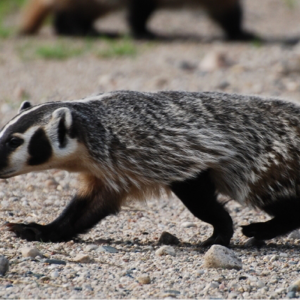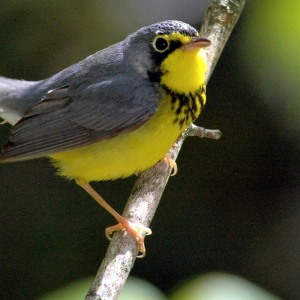L’orque
Vital Signs
Common name: Orca or Killer Whale
Latin name: Orcinus orca
Status under SARA: Northeast Pacific Northern Resident Population are listed as Threatened as of the 2008 Update Assessment. Northeast Pacific Southern Resident Population are listed as Endangered.
Range: The known range for the Northern Population stretches from Glacier Bay, Alaska to Grays Harbour, Washington. The known range for the Southern Population stretches from the Queen Charlotte Islands in Northern British Columbia to Monterey Bay in California.
Life span: Long-lived mammals, with females recording at up to 80yrs and males at 40-50yrs.
Size: Males have been recorded up to 9m long and weigh on average 6600-9100kg (7-10 tons). Females are on average 7m long and weigh 4700-6800 kg (5-7 tons). Dorsal fins can be up to 1.8m tall, in males, and shorter in females and juveniles at 1m.
Population estimate: As of 2006, there were 85 Southern Residents and 244 Northern Residents. Both show erratic population growths of increases and decreases of +/- 3%.
The Facts
Since 2008, genetic research found that there are “types” of Orcas from which actually differ enough in vocal patterns, diets, and eco-niches, that they can be considered sub-species or different species entirely! These “types” are known as “Resident”, “Transient” and “Offshore” populations. A group of Orca whales are known as a pod and those that reside in the waters around British Columbia are called the Northern Residents and Southern Residents in respect to their preferred locations.
All types have that famous tuxedo look with a black back and tail, white underside, and a white “eye-patch”. There are variations of patches and dorsal fin shapes among the types, however the best way to tell the types apart is with their preferred diet. Offshore and Residents whales will feed predominantly on fish, whereas Transient pods feed almost exclusively on marine mammals. Offshore Killer Whales feed on schooling fish since they are indeed that far out in the Pacific Ocean, whereas Resident Killer Whales feed on coastal fish (salmon primarily) and squid.
Luckily, Northern and Southern Resident Killer Whales are not limited to habitat conditions such as temperatures, salinity, or turbidity. It is noted that their distribution sufficiently follows that of salmon fish species, they favourite prey. Therefore, their habitat of choice first involves sufficient prey quantity and the least amount of noise pollution to effectively communicate via echolocation.
Their life biology is much more easily researched in Resident pods. Killer Whales are mammals with females averaging at 80 years old and males at 40-50 years. Both sexes reach sexual maturity around 12-17 years old, and females will produce a calf only once every 5 years. Resident Orcas have a peculiarity among marine mammals such that individuals don’t disperse from their natal pod!
The Story
Anthropomorphic threats make up the major issues. The toxicity build-up in Killer Whales’ fat cells due to oil spills and the build-up of toxins in waste products that gets thrown to sea has contributed to increase fatalities over the last decades. Organochlorine, for example, was reported at four times higher in Northern Residents than other pod! Ship interactions have increased due to more commercialization, meaning that the acoustics needed for echolocation are affected, and Killer Whale communication suffers in consequence. More fisheries contribute to increased accidental net entrapments and decreased prey availability.
All of the above, among other factors, show erratic populations for all pods since the 70’s, when strict monitoring began. Fortunately, Northern and Southern Residents have increased their numbers since the 70’s with 2006’s assessment at 85 Southern Residents and 244 Northern Residents. Since the types of Killer Whales show segregation among themselves, they do not interact on a reproductive level and thus cannot “be combined” to increase the overall numbers of Orcas.
What’s Being Done
Killer Whales are an iconic symbol of Canadian mammals and are symbolic in the Native community. They are a prime focus for tourism on the West Coast and among the best-known marine mammals internationally. The threat of their disappearance is not taken lightly. Both Northern and Southern Residents are listed under Schedule 1 of the Species At Risk Act (SARA).
The Recovery plan is based off 4 objectives for which research projects are underway to collect data. The first objective is to ensure adequate prey is accessible to present Killer Whales pods in order to keep their numbers steadily increasing. The second is to research what chemical and biological pollutants affect Killer Whales and ways to reduce them for an overall benefit to marine animals. The third is to reduce all anthropomorphic factors especially noise pollution. And lastly, to identify additional areas for habitat designation and protection. These objectives were set in 2011 under Fisheries and Oceans Canada.
What Can You Do?
- Know your products! Become more aware of what you’re buying and try to buy the most environmentally friendly items!
- Support sites such as Nature Canada and The Whale Museum that educate the public about our endangered animals and provide guides to good stewardships in your locations.
- Participate in Orca educational programs with your provincial wildlife organizations!
- Spread the word! Post, share, and tweet about saving Orcas. We have so much social media today that one article share can turn into a hundred within hours!
Resources
SARA Recovery Strategy
SARA Species Profile Southern Population
SARA Species Profile Northern Population
COSEWIC Assessment and Update Status
Thank you to guest blogger Tina-Louise Rossit for contributing this species spotlight.


